‘The Red Virgin’
0June 23, 2015 by Lydia Syson
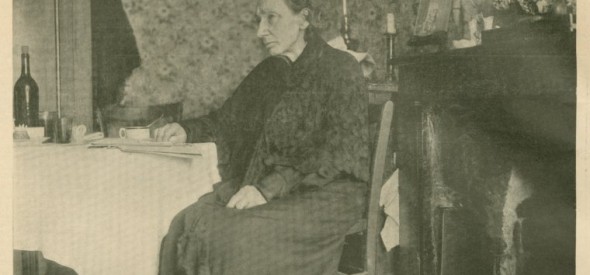
There is a character in Liberty’s Fire who is not named, but can be easily identified as Louise Michel, the best known of a number of impressive citoyennes featured in this blog post last month. Michel was one of many Communards who took refuge in London, and Fitzrovia in particular, to escape political repression in France in the aftermath of the Commune – even after the ‘Amnesty’ – and it was here that she met my great-great grandmother, N.F.Dryhurst, a member of the English Anarchist group.
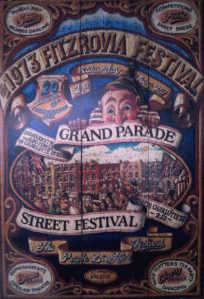 Last Saturday I had the very great pleasure of leading a well-attended walk for the Fitzrovia Festival, which is organised annually by a very active and welcoming Fitzrovia Neighbourhood Centre, (this year celebrating forty years of community activity) during which we explored the London lives of a number of Communards ‘after the fall’. I’ll be writing that up in full for The History Girls next month. [We are all still loudly cheering today after Tanya Landman’s wonderful Carnegie triumph with her most compelling novel Buffalo Soldiers, and I do urge you to read her latest HG post as well as the novel.] In the meantime, here are some views of Louise Michel in later life. The first is by the war correspondent Henry Nevinson, and comes from his memoir Fire of Life (1935):
Last Saturday I had the very great pleasure of leading a well-attended walk for the Fitzrovia Festival, which is organised annually by a very active and welcoming Fitzrovia Neighbourhood Centre, (this year celebrating forty years of community activity) during which we explored the London lives of a number of Communards ‘after the fall’. I’ll be writing that up in full for The History Girls next month. [We are all still loudly cheering today after Tanya Landman’s wonderful Carnegie triumph with her most compelling novel Buffalo Soldiers, and I do urge you to read her latest HG post as well as the novel.] In the meantime, here are some views of Louise Michel in later life. The first is by the war correspondent Henry Nevinson, and comes from his memoir Fire of Life (1935):
‘”The Red Virgin” was conspicuous at nearly all the [Anarchist] meetings – conspicuous in ancient black, always worn to commemorate her fellow Communards pitilessly slaughtered in Paris (1871) to glut the bloodthirsty of the bourgeoisie, who, crowding around the slaughter-house with jeers and laughter, stood to witness the executions in mass. Old black bonnet, shaped like the Salvation Army bonnet and flung anyhow on top of the wild and copious grey hair; old black shawl; long black dress; and, making one forget dress and age and all, the think white face, lined with mingled enthusiasm and humour; prominent nose and receding chin, high and receding forehead, and under it keen grey eyes, eagerly peering out upon the world with rage, humorous pity, and gentleness strangely combined. She always spoke in French, her quiet and monotonous voice just rising and falling, sweet and low as the summer sea. “Ne cadencez pas, monsieur, ne cadencez pas!” she used constantly to say to me in her vain attempts to teach me her beautiful language; but her own cadence was regular and inevitable as the waves. “I am growing old,” she said at the beginning of one of her greatest speeches, “and as I grow old I learn to have patience.”‘ (p. 52)
(‘Ne cadencez pas‘ is probably best translated as ‘not so sing-song’ or ‘don’t make it rhythmical’.)
Nevinson is coy here about his introduction to the English Anarchist circle, referring only to ‘a deep and lasting friendship with a very remarkable member of the Anarchist group’, but you can read the full story of Nevinson’s life, including his relationship with N.F.Dryhust and other anarchists, in Angela John’s wonderful biography War, Journalism and the Shaping of the Twentieth Century (2006). This London Fictions article about his East End life and short story collection Neighbours of Ours gives a good clue as to why he came to be teaching ‘drill’ of all things at Michel’s International School in Fitzroy Street. In Fire of Life, Nevinson is a little more revealing about his feelings for Dryhurst when he describes the staff of reviewers he used during his time as literary editor of The Daily Chronicle: ‘For Irish history and literature, as well as for Shakespearean times, there was Mrs N.F.Dryhurst, always bringing with her the wit of Ireland, the kindling inspiration, the flaming wrath, and a sarcasm like the lick of a lioness’s tongue.’ (p.85.)
As for the Red Virgin, educationalist, fellow Fabian and nursery school pioneer Margaret McMillan, whose sister Rachel also volunteered at Michel’s school, offers another view of the former communarde. Like so many of her contemporaries, McMillan had clearly fallen sway to the popular vogue for physiognomy, and found Michel’s physical appearance somewhat disconcerting:
‘She had taken off her hat and the shape of her head was anything but reassuring. Why, then, did her features, her eyes, her voice, contradict its testimony? Her mild, dark yes, full of pity and veiled fire, might have belonged to Francis d’Assisi, and she had the profile of Savonarola, but the head was alarmingly narrow at the top. Like that of another prominent Anarchist, it had no arch, but ended like the unfinished roof of a building. The whole physiognomy, despite its expression of strange forms of pity, was unfinished. This profile made you dream, when you got over your first alarm, of the sub-structure of a new and fine humanity. All the same it was not reassuring. The beholder felt himself exposed to all the storms and terrors of temperament by reason of the unfinished roof…Very often it was hard to know whether she was the forerunner of a great race, or a reversion to early type. She, for her part, had no doubt about our present civilisation, its leaders and followers.
“Primates,” she said, “Primates tous – who advance a little and then become corrupt.”‘
Category News | Tags: English Anarchists, Fitzrovia, Fitzrovia Festival, French in exile, Henry Nevinson, international school, Liberty's Fire, Louise Michel, Margaret McMillan, N.F.Dryhust, Paris Commune

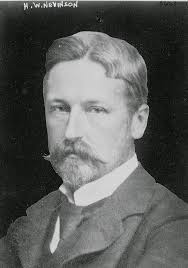
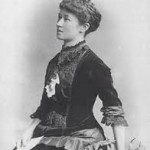
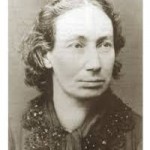

Leave a Reply